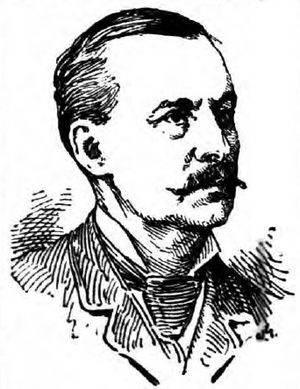John C. Babcock facts for kids
John C. Babcock (born September 6, 1836 – died November 20, 1908) was a very important person in American rowing. He also worked for the secret service during the Civil War for the Union Army.
Early Life and Work
Babcock was born in Warwick, Rhode Island. In 1855, his family moved to Chicago. There, Babcock worked for a large architecture company. He helped design many beautiful homes on Prairie Avenue, also known as "Millionaire's Row."
Civil War Service
John C. Babcock served throughout the entire Civil War. He first joined the Sturgis Rifles as a soldier in 1861. Soon after, he was asked to become a main scout for the Army of the Potomac.
Babcock became very good at questioning captured Confederate soldiers. In 1862, he worked with Allan Pinkerton to study the Confederate army's structure. He even made maps for General George B. McClellan. In one report, Babcock's guess about the enemy's strength was almost perfectly accurate.
In 1863, Babcock joined the Bureau of Military Information. This was a secret group led by Colonel George H. Sharpe. Babcock helped gather important information. He also made detailed maps for Thaddeus S. C. Lowe, who flew balloons to get a better view of the battlefield.
Later in 1863, Babcock found out that Robert E. Lee's army was moving forward. This discovery helped to end the Battle of Gettysburg. In 1865, at the Battle of Appomattox Court House, Babcock found General Lee. He then helped with the surrender of the Confederate States Army. Even though he was a civilian, people called him "Captain Babcock" and later "Colonel Babcock."
Innovations in Rowing
Babcock was a true innovator in the sport of rowing. He was one of the most active people in the rowing world during his life.
- In 1857, he and his friend William Buckingham Curtis started the Metropolitan Rowing Club of Chicago. This was the first amateur rowing club in the western United States.
- That same summer, Babcock invented the sliding seat for his rowing boat. He made it even better by 1870.
- In 1859, he and Curtis won every rowing event at the Chicago Caledonian Club games.
- During the winter of 1869-1870, Babcock created the first indoor rowing machine.
- In 1872, Babcock helped write the rules and create the National Association of Amateur Oarsmen (NAAO). He was the first president of the NAAO, which later became USRowing.
- With Harry Buermeyer and Curtis, Babcock also helped start the New York Athletic Club (NYAC) in 1868. He was the first Vice-President of the NYAC. He strongly believed that amateur athletes (who don't get paid) should be separate from professional athletes (who do get paid).




